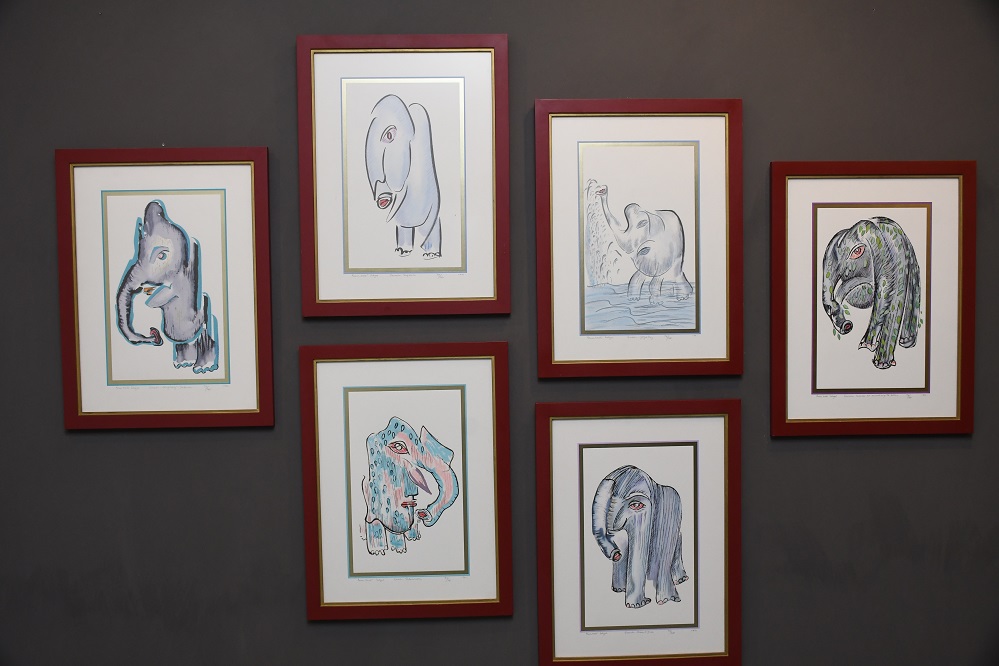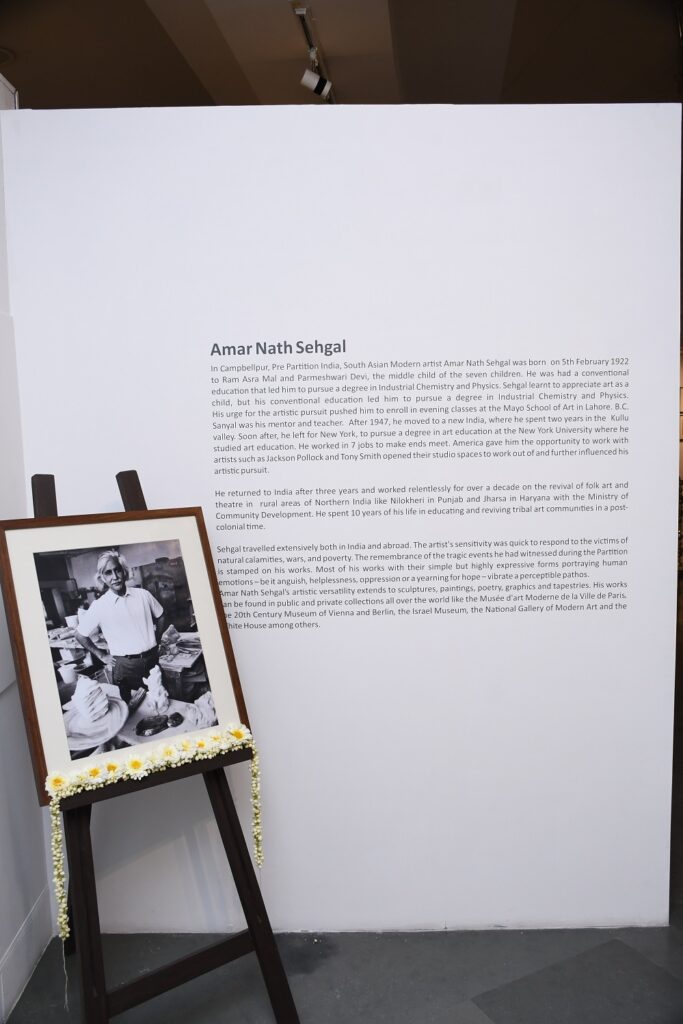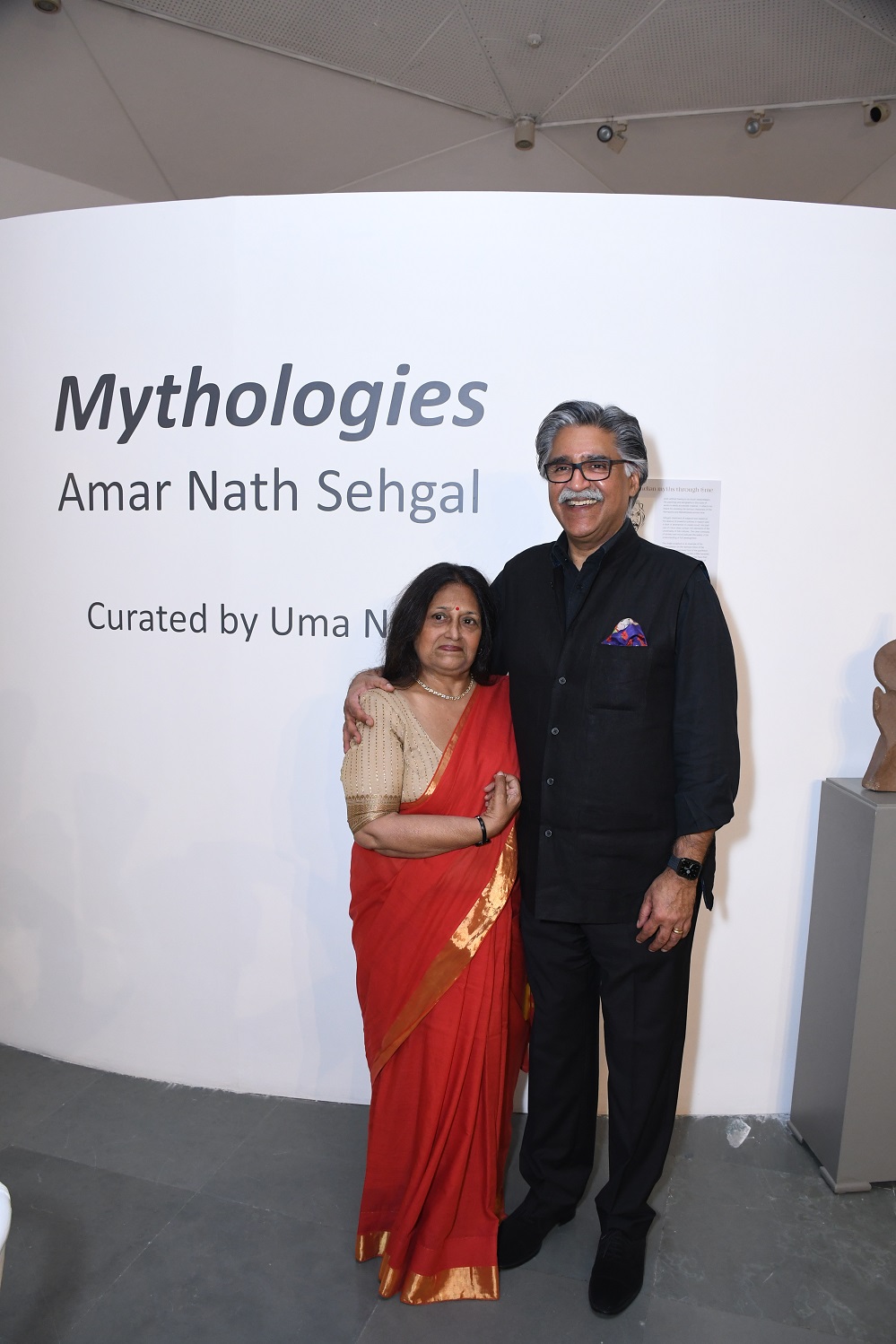Famed artist Amar Nath Sehgal is best
Born in 1922, Sehgal moved to Delhi from Lahore after the partition of India in 1947. The anguish of this period was to shape much of his later practice. Though he was trained as an engineer, he always felt drawn to the arts and in 1950 moved to New York to study art at the New York University School of Education. He then taught at the College of Art, Delhi and simultaneously built his practice as an artist who wasn’t afraid to explore deep and dark themes through his work. Though his body of work mostly consists of modern sculptures, he also dabbled in painting, drawings, and poetry.
From 1979 till 2004, Sehgal was based in Luxembourg, which is also where one of his most iconic works – the bronze bust of Mahatma Gandhi – was originally on display. In 1993, he was awarded the Lalit Kala Akademi Fellowship by the Government of India, and in 2008, he received a posthumous Padma Bhushan.
A private museum dedicated to his work is located in Jungpura, Delhi, in the space which earlier functioned as his studio. It is the only museum dedicated to a single artist in the country. From this collection stems ‘Mythologies’, which is an unusual show revisiting the great Indian myths as seen from Sehgal’s artistic outlook, with a series of works based on scenes from the Ramayana and Mahabharata. The work on display consists of a set of serigraphs and one Ganesha Sculpture.


Curator Uma Nair says, “I have closely followed his work for more than three decades and consider him amongst India’s greatest sculptors. He was a polymath who dabbled in drawings, paintings, sculptures, and woodcuts. A maestro who created and wrote poetry every day, he celebrated the beauty of life and the living. Sehgal lived for many years in Luxembourg and picked up the versatile grammar of the European moderns but hinged it onto Indianesque contours so that his vocabulary was a fine balance of Indian myth, bathed in the contemporary character of lithe contours, belonging to modernism.”
She adds, “This suite of works is a tribute to his love for Indian mythology, to his elephantine eagerness in translating tales as old as history, events older than tradition, and stories that never grow old. But Sehgal was not religious by any yardstick; he was deeply spiritual, the Ganesha was his little mascot for everyday idioms, the stories of the epic Ramayana and Mahabharata unravelled like abstracted tales that he revisited every day.”
Nair points out that Sehgal’s simplicity of drawing was also the way in which the mastery of his craft truly shone. It allowed the audience to examine his work without putting too much effort into its interpretation. The paintings and serigraphs in this collection of works are easily accessible and aptly display his talent for revisiting and shaping the famous characters of these great epics across time, in his own language.
One sees it in the sanguine portrait titled ‘The Spirit of Sita’, through the arrogance visible in the ‘Portrait of Kaikeyi’, and the anger in the ‘Portrait of Ravana’, as well as in the beauty of the ‘Forest of Chitrakoot’. Sehgal’s playful Ganeshas complete the exhibit, displayed alongside his arresting sculpture of the elephant god.
The exhibition’s opening on March 17 saw the launch of a special catalogue, as well as a performance by renowned Bharatanatyam dancer Justin McCarthy. He performed a scene from the Ramayana where Sita reacts in shock and anger at being told by Rama that he has been banished to the forest and must leave her. She questions how her beloved husband could ever consider leaving her behind. The poignant piece fit the theme of the evening well and was appreciated by the audience.
‘Mythologies’ is currently on display at the Art Gallery in the Kamaladevi Complex, India International Centre, Delhi, till March 31.
Noor Anand Chawla pens lifestyle articles for various publications and her blog
www.nooranandchawla.com.

